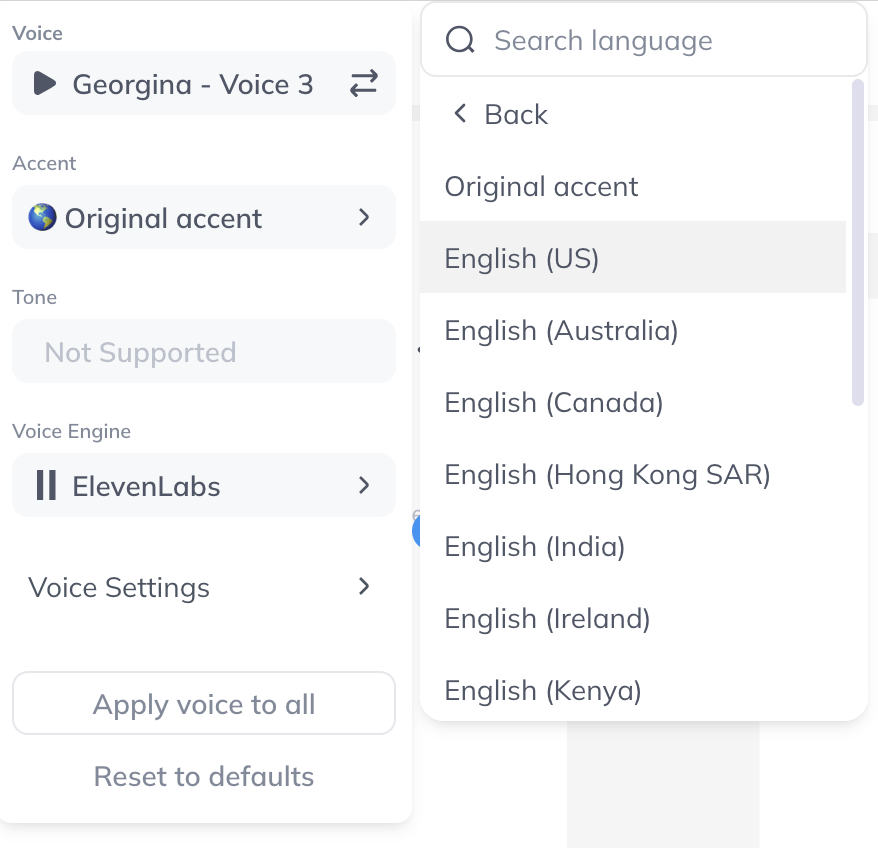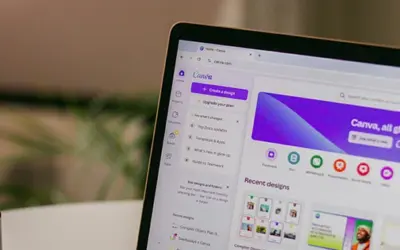Prevention note – For a responsible use of AI
When we use artificial intelligence to generate teaching materials (text, images, audio, video), we must be careful to respect copyright. The content generated by the AI can sometimes reproduce, even partially, protected works. We therefore make sure that we only import documents into the AI that belong to us or that are explicitly free of copyright, and we systematically re-read the content generated before offering it to our students.
We should also bear in mind that every time AI generates content, it consumes energy and contributes to digital pollution. So let’s use it sensibly and generate only the media we need to limit our environmental impact.
In language teaching, video is a medium that captures attention, contextualises learning and stimulates listening comprehension. Yet creating a personalised video can seem complex and time-consuming. I wanted to try out HeyGen, an online tool that promises to generate videos in just a few clicks, and see how easily this medium could be integrated into LaboPractice to turn it into an interactive exercise. Here’s a step-by-step account of the experience, with practical advice on how to go further in your own use.
Preparing your script: the essentials first
It all starts with pedagogical thinking. I went back to the first three units of an English A1 textbook: numbers, telling the time, giving directions, rooms in a house, hobbies, days of the week. The objective? Compose a simple, lively text that reuses these concepts in a coherent context.
1. Define the educational objectives
First of all, identify exactly what you want to work on with your pupils:
- Target skills: listening comprehension, finding information, thematic vocabulary (housing, leisure activities, career guidance, etc.).
- Language level: here is an example of a script adapted to A1 level.
2. Writing an effective script
- Clarity and simplicity: use short sentences and vocabulary appropriate to the level of your pupils.
- Authenticity: include elements of everyday life (e.g. telling the time, describing a flat, explaining a journey).
- Customisation: adapt the script to situations that are close to the students’ reality.
Here is the script for this demo:
Hello, my name is Lisa and I’m 25. I’m French and I come from France. I live in a flat in the city. It’s a comfortable flat with two bedrooms, a spacious living room, a small kitchen and a bathroom. The kitchen is next to the living room, which is very practical. In the living room, there’s a comfortable sofa, a coffee table and a television.
At the moment, I like to go to the cinema to watch films. Tonight, I’m going to see a very interesting action movie that starts at quarter past eight at the cinema near my home. I really enjoy going to the cinema at the weekend. Tonight is Friday. It’s half past six. Before the movie, I have to eat something. Maybe some spaghetti?
After the movie, I’ll go home. My apartment is near the park. To get there, I have to turn right after the cinema, then go straight for two blocks. My street is the third on the left. My apartment is on the second floor.
Goodbye and see you soon.
Create your video in HeyGen: simplicity and possibilities
The next stage takes place on heygen.com. After a quick registration, I discovered a streamlined interface: on the left, a space to enter or import text; on the right, a video preview. I started by exploring the avatars on offer and settled on a character created using motion design. I could have created my own, but I prefer to choose a character that’s already available to guarantee a professional rendering.
I have two options for bringing my text to life:
- Copy and paste the script into the space provided. HeyGen will then generate the avatar’s voice, intonation and movements.
- Import an audio recording. This feature particularly appealed to me: just click on ‘upload audio’ to load your own voice. The avatar then synchronises its lip movements with the imported audio. It’s ideal for working on authentic pronunciation or offering a variety of accents, or even involving students in the creation of the material.
Exploit the richness of accents and voices with HeyGen

The HeyGen screenshot shows an invaluable feature for language teaching: the choice of accent. You can have Georgina speak American, British, Australian, Canadian, Irish, Indian and many other languages.
This is a unique opportunity to make your pupils aware of the diversity of English: have them listen to the same video in two different accents and ask them to spot the differences.
The voice settings can also be adapted to suit the age of the students or the context (young/adult, formal/informal).
Click on ‘Generate’ and, after a few moments, the video is ready to be previewed and downloaded in .mp4 format.
Here is the result:
The limits of HeyGen’s free plan
HeyGen’s free plan is ideal for discovering the tool and making your first educational videos, but there are several limitations to bear in mind when using it in the classroom. First of all, the length of the videos is limited: you can generally create videos of 1 to 2 minutes maximum, which means you need to work on short scripts or segment your content if you want to cover several linguistic points.
In addition, all videos created with the free plan include a visible watermark to indicate the origin of the medium. This watermark does not prevent educational use, but it may hinder distribution in certain official contexts or during public presentations.
The choice of avatars and voices is also limited: you will have access to a restricted selection of characters and accents, even though, as the screenshot shows, HeyGen already offers a wide variety of accents (US English, British, Australian, Canadian, Indian, etc.). Finally, the resolution of the videos remains standard, but that’s good enough for classroom use!
Key points:
- Length limited to 1-2 minutes per video.
- Watermark on each video.
- Limited choice of avatars and voices, despite a wide range of accents.
- Standard resolution, suitable for everyday educational use.
- Ideal for short, targeted activities and classroom experimentation.
Integrate video into LaboPractice: everything becomes interactive
This is where the most interesting phase begins: creating the questions. I write listening comprehension questions, suggest information retrieval exercises:
- ‘What time does the film start?’
- ‘Where is Lisa’s flat?’
But also instructions for oral or written production:
- ‘Describe your own flat’
- ‘Write the rest of the story and record yourself reading it’ (depending on the level of the learners, of course).
LaboPractice also allows you to ask students to record themselves answering orally, which makes the activity even richer.
To find out how to integrate your video into LaboPractice step by step, please consult the LaboPractice Quick Guide for more details on media integration.
Why is this a game-changing approach to language teaching?
For teachers, creating video material has never been so accessible. No need for technical skills or complex software: in just a few minutes, you have a personalised video that can be used directly in the classroom or remotely.
By integrating with LaboPractice, you can turn this support into an interactive activity, vary the approach and adapt to the needs of each student.
For learners, video offers an immersive experience: they hear British or American English, visualise real-life situations, and can practise speaking and writing. Some students, who are sometimes reserved when speaking, find this format a new motivation to express themselves.
To conclude
By combining HeyGen and LaboPractice, it is possible to create authentic, motivating comprehension and production activities adapted to all levels. This simple yet innovative approach paves the way for a more dynamic approach to teaching, where every teacher can become the creator of his or her own materials.
Would you like to discover the full potential of LaboPractice and benefit from personalised support?
Ask for a demonstration and turn your ideas into practical activities for your students today.
Author of the article : Manon Girardet



